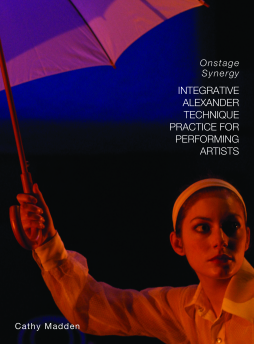
Additional Information
Book Details
Abstract
An educational method used to improve performance, the Alexander Technique teaches people to replace unnecessary muscular and mental effort with consciously coordinated responses, maximizing effectiveness while also relieving, if necessary, any chronic stiffness or stress. Integrative Alexander Technique Practice for Performing Artists brings together the empirical research of Cathy Madden, a teacher and coach with more than thirty-five years of experience with the technique. She addresses common concerns, such as concentration, relaxation, disciplinespecific techniques, warm-ups, performer/audience relationships, stage fright, and critical responses, and explores the role of the senses, emotions, learned behavior, human consciousness studies, and neuroscience in the application of the techniques.
Table of Contents
| Section Title | Page | Action | Price |
|---|---|---|---|
| Cover | Cover | ||
| Half Title | i | ||
| Title | iii | ||
| Copyright | iv | ||
| Contents | v | ||
| Acknowledgements | ix | ||
| Introduction | 1 | ||
| Part One: Performing Artists’ Foundation for Using the Alexander Technique | 9 | ||
| Chapter 1: An Actor Began This | 11 | ||
| Chapter 2: How Does the Alexander Technique Work? | 19 | ||
| Chapter 3: The Design of Our Instrument: An Introduction | 33 | ||
| Chapter 4: First Experiments in the Alexander Technique | 49 | ||
| Chapter 5: Concentration Is a Lousy Word for All Performing Artists! (And All People!) | 59 | ||
| Chapter 6: Congruency: Relax Is a Lousy Word for Performing Artists | 71 | ||
| Chapter 7: The Omnisensory Experience (Including the Kinesthetic Circus and a Look at Emotions) | 81 | ||
| Chapter 8: Psychophysical Definitions | 95 | ||
| Chapter 9: Constructive Planning | 105 | ||
| Chapter 10: Freedom of Choice | 119 | ||
| Chapter 11: Integrating the Alexander Technique with Your Technique | 129 | ||
| Chapter 12: Some Discipline-Specific Notes Regarding Technique | 143 | ||
| Chapter 13: F.M. Alexander’s Story | 159 | ||
| Part Two: Alexander Technique Revivification of the Journey of Performing | 167 | ||
| Chapter 14: The Journey of Performing: Defining Performance Basics with the Alexander Technique | 169 | ||
| Chapter 15: The Journey of Performing: The Specific Circumstances | 181 | ||
| Chapter 16: The Journey of Performing: When the Journey Is in a Fictional World | 201 | ||
| Chapter 17: The Journey of Performing: Beginning, Middle and End | 209 | ||
| Chapter 18: The Journey of Performing: The Psychophysically Phrased Active Verb | 223 | ||
| Chapter 19: The Journey of Performing: Coordinating Together (Performer-to-Performer Relationships) | 233 | ||
| Chapter 20: The Journey of Performing: Coordinating with the Audience | 243 | ||
| Chapter 21: The Journey of Performing: Stage Readiness (no more 'stage fright'!) | 255 | ||
| Chapter 22: The Journey of Performing: Constructive Critic and Celebration | 267 | ||
| Chapter 23: The Journey of Performing: Coordinated Creativity | 279 | ||
| Part Three: Onstage Synergy | 291 | ||
| Chapter 24: Onstage Synergy: Template Variations and Studied Rehearsed Plans | 293 | ||
| Chapter 25: Onstage Synergy: Preparation and Warm-Ups | 311 | ||
| Chapter 26: Onstage Synergy: Rehearsing | 323 | ||
| Chapter 27: Onstage Synergy: Performing | 335 | ||
| Chapter 28: Onstage Synergy | 345 | ||
| Appendix One: AT Rehearsals Reference Guide | 353 | ||
| Appendix Two: Finding an Alexander Technique Teacher | 359 | ||
| Appendix Three: Performance Chroniclers | 363 | ||
| Appendix Four: Keynote Address, Alexander Technique and Performing Arts Conference | 367 | ||
| Works Cited | 375 | ||
| Index | 383 |
